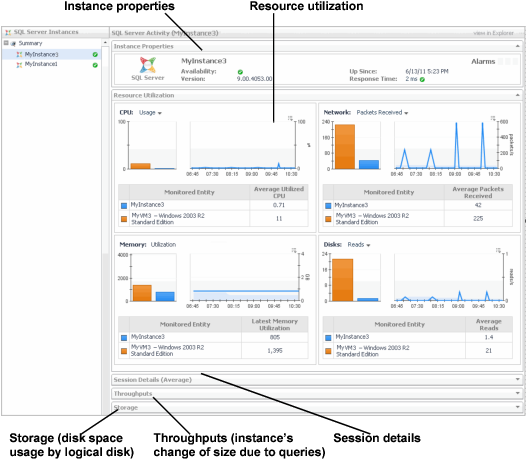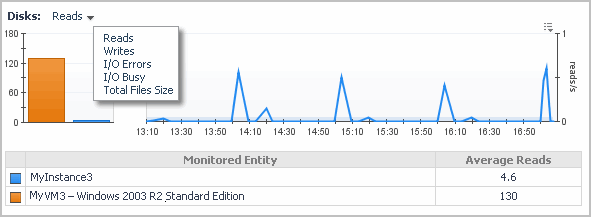Reviewing SQL Server Activity for a Specific Instance
This view allows carrying out the tasks described in the following sections:
The Instance Properties section contains the following components:
|
• |
|
• |
|
• |
|
• |
The Session Details (Average) section displays the following summarized data:
The Disk Space Utilization bar displays the space breakdown of the logical disk into the following categories:
The Virtual Machine section displays the following data regarding the virtual machine’s disk space utilization:
The Database section displays the following data regarding the SQL Server instance’s disk space utilization:


